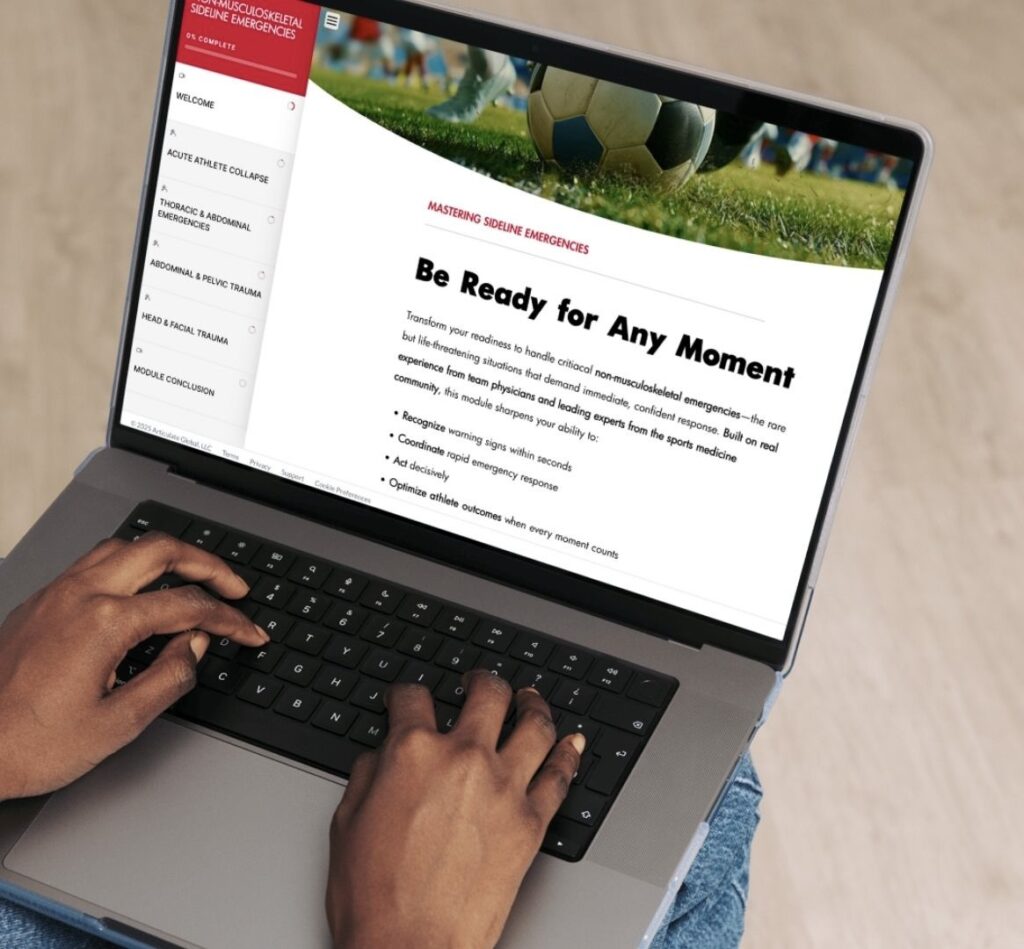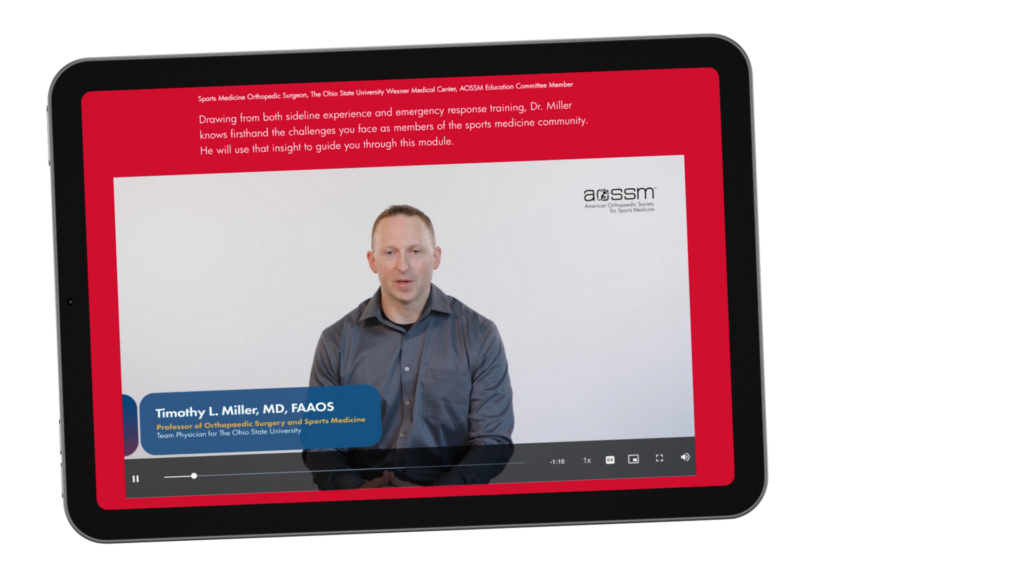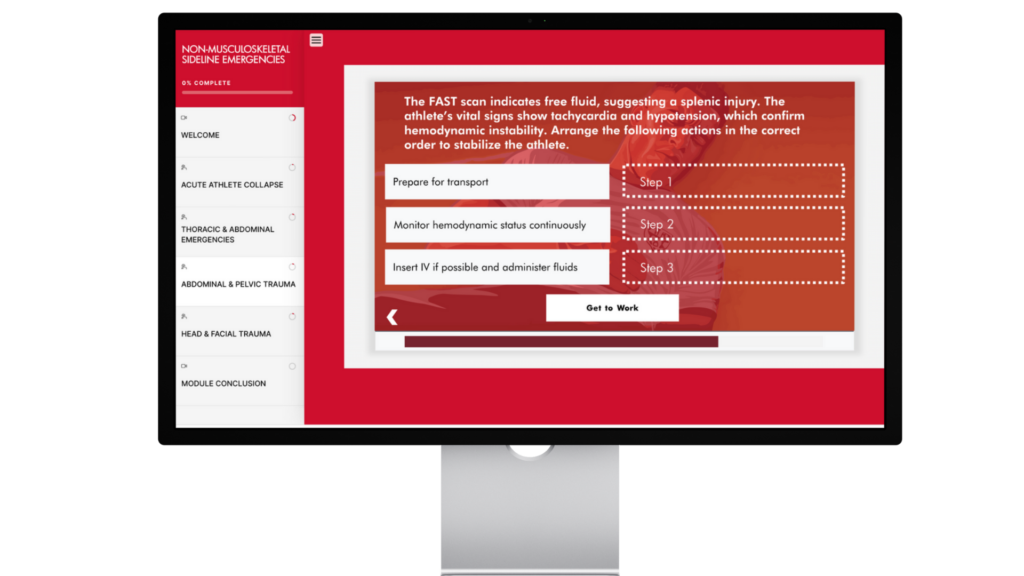Picture a highly experienced sports medicine physician on the sidelines of a football game. In a split second, they need to assess an injured player, consider multiple environmental factors, weigh treatment options, and make critical decisions.
What guides these rapid, nuanced judgments? More importantly, how can we help other physicians develop this same level of expertise?

These split-second decisions aren’t just about knowledge—they’re about how expertise is structured in the mind. And yet, when that physician tries to teach their craft, they may struggle to explain the very decisions that come naturally to them.
This is the paradox at the heart of effective learning design: The more advanced someone becomes, the harder it is for them to explain their expertise. If we don’t capture expert thinking effectively, learning experiences become oversimplified, rigid, and disconnected from the messy, high-stakes realities of real-world practice.
The Expert’s Paradox: When Knowledge Becomes Invisible
Cognitive scientists call this phenomenon “the curse of expertise.” As professionals gain mastery in their field, their decision-making becomes increasingly automated. The mental models, pattern recognition, and contextual awareness that drive their expertise become so internalized that experts often struggle to articulate how they actually think through complex situations.
This creates a fundamental challenge in learning design:
How do you capture and transfer expertise when subject matter experts (SMEs) can’t easily explain their own decision-making process?
Understanding Expert vs. Novice Thinking
The Dreyfus Model of skill acquisition explains why experts can’t simply “download” their knowledge. As professionals progress from novice to expert, they move from rigid rule-following to fluid, intuitive decision-making based on pattern recognition.
Traditional SME interviews fail because they focus on what experts know, not how they think. Ask an expert for a process, and they’ll give you a novice’s roadmap—not their actual mental map.

Breaking the Curse: Use Storytelling to Unlock Expertise
📖 Key Insight: Stories naturally reveal how experts “chunk” information into meaningful patterns. When experts share specific experiences, their unconscious decision rules emerge organically.
Instead of asking experts to list what they look for, ask them to recall moments when they had to make a critical decision—when something didn’t go as expected, when they noticed a subtle but important cue, or when they had to adapt their approach under pressure.
Here’s how to decode expert decision-making through five types of strategic storytelling:
1. Pattern Recognition & Critical Decisions
🔍 What We’re Unlocking: How experts “see” differently and spot patterns novices miss.
Experts don’t follow a rigid checklist; they rely on years of accumulated experience to recognize meaningful patterns. Their decision-making is fluid, often unconscious, and shaped by an ability to detect subtle cues that others overlook.
🛠 How to Use It: Ask SMEs to recall a moment when they noticed something that changed their course of action.
💬 Example:
“The initial sideline assessment showed normal range of motion…”
- What made you dig deeper with this athlete? What caught your attention?
- Tell me about a time you spotted a serious injury that initially seemed minor. What were you noticing?
- Could you walk me through how you piece together different signals when evaluating a potential concussion?
2. Contextual Constraints & Trade-offs
🔍 What We’re Unlocking: How experts balance competing priorities and navigate real-world constraints.
Expertise isn’t just about knowing the right answer—it’s about judgment calls under imperfect conditions. Game-day urgency, limited information, and conflicting pressures all shape decision-making.
🛠 How to Use It: Ask SMEs to describe a time when they had to adjust their approach due to external pressures.
💬 Example:
“The concussion protocol calls for a complete assessment, but…”
- Tell me about a time when you had to modify your approach due to a critical game situation.
- Could you share an experience where you had to balance an athlete’s desire to play with long-term health concerns?
- Walk me through a case where you had to make a tough call with limited information.
3. Failure & Edge Cases
🔍 What We’re Unlocking: How expertise grows through mistakes and unexpected cases.
Experts don’t just accumulate knowledge—they refine their judgment by encountering cases that challenge their assumptions. By analyzing moments of failure or surprise, we can understand the nuances of expert reasoning.
🛠 How to Use It: Instead of just asking about success stories, focus on cases where things didn’t go as expected.
💬 Example:
“The standard approach for ankle sprains is…”
- Tell me about a case where the typical assessment process led you astray. What did you learn?
- Share a time when an injury presented in a way that completely changed how you approach similar cases.
- What’s the most surprising injury manifestation you’ve encountered? How did it shift your practice?
4. Mental Models & Teaching Insights
🔍 What We’re Unlocking: The frameworks experts use to structure their thinking and explain complex ideas.
Experts don’t just apply knowledge—they use mental shortcuts, analogies, and heuristics to simplify complexity. By capturing these, we can teach learners not just what to think, but how to think.
🛠 How to Use It: Ask experts about the analogies, rules of thumb, or guiding principles they use to teach.
💬 Example:
“Knee examination involves multiple tests, but I always tell residents…”
- What analogy do you use to help learners understand complex injury patterns?
- How do you teach new physicians to balance thorough assessment with game-day time pressure?
- What’s your go-to way to explain the difference between textbook and sideline evaluation?
5. Evolution of Expertise
🔍 What We’re Unlocking: How expert judgment develops over time.
Expertise isn’t static—it evolves through experience, reflection, and exposure to a variety of cases. Understanding this evolution helps us design learning that accelerates real-world mastery.
🛠 How to Use It: Ask experts to reflect on their own growth—what shifted their thinking, what mistakes shaped them, and how they moved from rule-following to intuitive reasoning.
💬 Example:
“Early in my career, I used to approach return-to-play decisions differently…”
- What do you understand now about sideline evaluation that you wish you’d known in your first season?
- Tell me about a case early in your career that transformed how you approach injuries.
- How has your approach to return-to-play decisions evolved over the years?

Turning Expert Stories into Expertise-Driven Learning
Capturing expert stories is only half the equation. The real value comes from transforming these insights into experiences that build expertise. By structuring learning around decision points, perceptual cues, and expert reflection, we accelerate the journey from novice to expert. Here’s how:
🏗 Reconstruct Real-World Decision Challenges
Expertise isn’t linear—it develops through exposure to uncertainty and trade-offs. Instead of teaching static protocols, we translate expert stories into realistic, high-pressure scenarios that force learners to think like pros.
Create scenario-based learning by reconstructing real decision points from expert cases and introducing competing priorities and the unexpected. Use branching narratives where learners make decisions with limited data, experiencing realistic consequences based on their choices.
🎭 Immerse Learners in Authentic Scenarios
The closer learning feels to real-world decision-making, the faster expertise develops. Create environments with real-world constraints like time pressure, incomplete data, and high-stakes consequences. Embed expert thinking through structured reflection, where learners compare their reasoning to expert responses and participate in post-scenario debriefs where experts narrate their thought process: “Here’s why I made that call, and what I saw that you might have missed.”

The Future of Learning: From Knowledge to Lasting Expertise
By designing learning around expert stories and authentic decision-making, you do more than just transfer knowledge—you hardwire expertise into long-term memory. This creates professionals who can access their learning precisely when it matters most, like that sports physician making split-second sideline calls.
The result? Training that sticks, expertise that transfers, and professionals who can reliably perform at expert levels under real-world pressure.
Ready to transform learning? Let’s explore how story-driven approaches can elevate your training, teams, and customer education. 🚀
